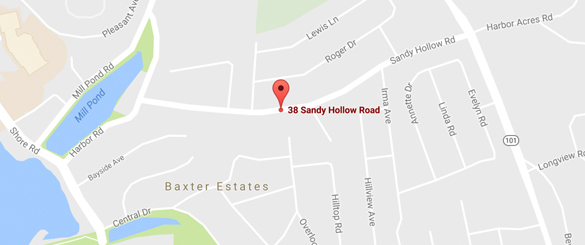PWWD STAYS ON TOP OF 1,4-DIOXANE CONCERNS
Port Washington Water District has always taken a proactive approach to testing and reporting on potential emerging contaminants, specifically with 1,4-dioxane. Initial testing was conducted during 2014, and the District volunteered to conduct a repeat sampling in 2016. Resampling and testing will continue to take place in the coming months.
Recent media coverage on the detection of 1,4-dioxane in various Long Island drinking water wells has heightened public awareness of the issue. PWWD Superintendent Paul Granger, P.E. is the chair of the New York Section AWWA Water Utility Council and is currently working with other water health professionals to ensure that every precaution is being taken to protect our water supply. He has prepared the following overview and outline of 1,4-dioxane to further educate consumers.
What is 1,4-Dioxane?
1,4-dioxane is a synthetic chemical used as a solvent and a chlorinated solvent stabilizer for industrial chemicals, predominantly 1,1,1-trichloroethane (TCA). It is used in a variety of applications such as inks and adhesives. It is also found in every day household items such as:
- Cosmetics
- Detergents
- Shampoos
- Deodorants
- Hair Care
- Sunscreen
- And More
It is important to note that this is an issue that reaches far beyond drinking water. This is only an issue for water supply systems because its presence is so pervasive in these everyday household products.
There is currently no chemical-specific Federal or New York State drinking water standard for 1,4-dioxane; however, it is regulated as an Unspecified Organic Contaminant by the New York State Department of Health (NYSDOH) at a maximum contaminant level (standard) of 50 parts per billion (ppb). Our 1,4-Dioxane point of entry test results ranged from below detection limits to 1.90 ppb with an average of 0.75 ppb. These results are lower than the New York State Health Department standard, so there are no special actions our District or our consumers need to take. Levels of 1,4-dioxane do not appear to be increasing on Long Island. Generally, detections of the compound have been fairly stable, not trending upward.
The EPA also established a lifetime health advisory of 200 ppb for 1,4-dioxane in drinking water (Source: EPA 2012). In addition, the U.S. EPA has estimated the concentration of 1,4-dioxane in water corresponding to an increased lifetime cancer risk of one in a million, assuming consumption of 2 liters of water per day each and every day for a lifetime (70 years), which is 0.35 ppb. This health-protective criterion is often used as a non-regulatory benchmark for minimal risk.
The Federal Consumer Product Safety Commission continues to monitor for 1,4-dioxane in consumer products, and legislation has been proposed to regulate and to restrict chemicals such as 1,4-dioxane. While many personal care product companies are beginning to voluntarily remove this chemical from their products, elected officials have begun to petition the U.S. Food and Drug Administration to require that all manufacturers remove 1,4-dioxane from consumer products like shampoos and lotions.
What about home water treatment devices and bottled water?
Water provided by our District is already lower than the current state regulatory standard for unspecified organic contaminants, so there are no special actions that our customers need to take. Regulations for 1,4-dioxane in bottled water (which are enforced by the U.S. Food and Drug Administration) have not been developed. Bottled water manufacturers may have specific information on 1,4-dioxane levels for their products.
Will the EPA be setting a standard for 1,4-Dioxane?
That is yet to be determined. The EPA regularly reviews drinking water standards as new science becomes available and is currently reviewing new 1,4-dioxane health effects information. Once the review is completed, the EPA will carefully review the conclusions and consider all relevant information to determine whether a drinking water standard for 1,4-dioxane is needed. The drinking water community is working with the EPA to review all relevant information on 1,4-dioxane including health effects, occurrence and treatment options. This work will help support the EPA in its decision-making process.




